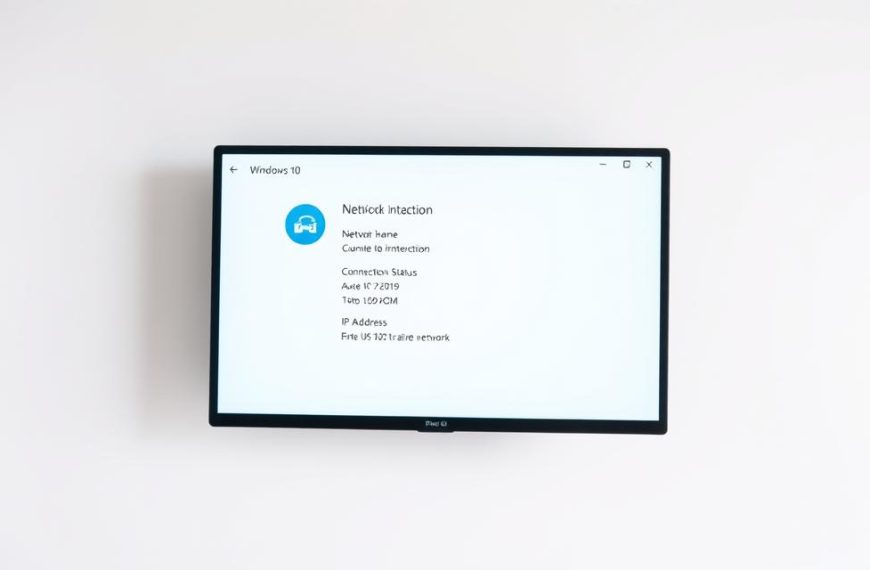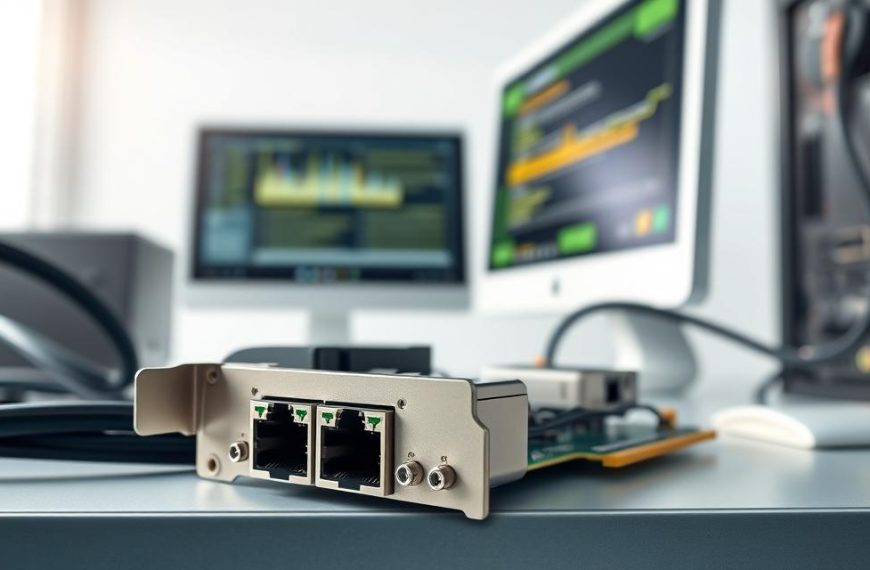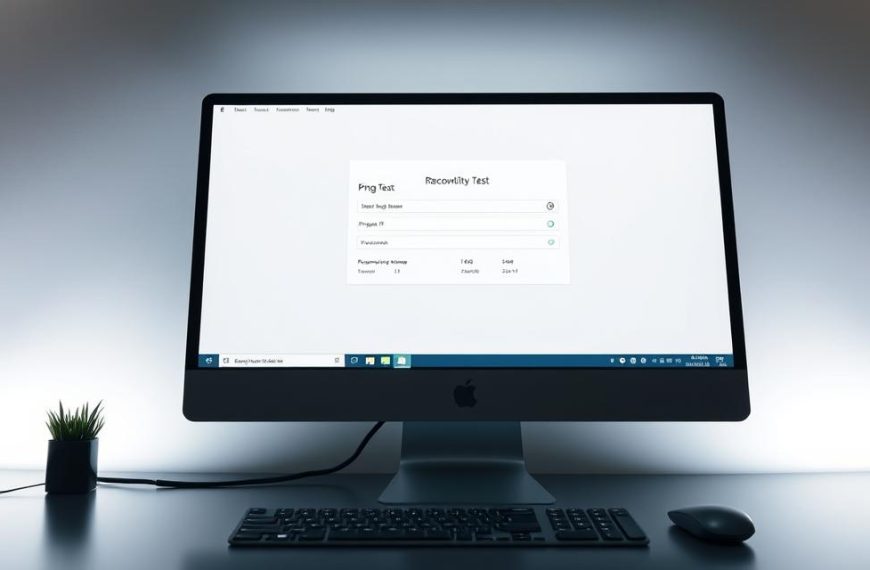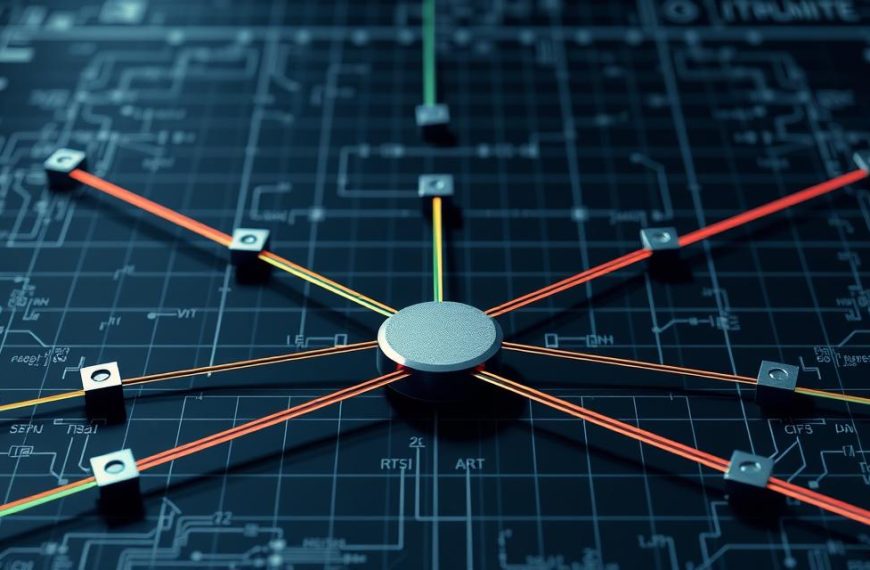Modern networking uses bidirectional communication systems. These systems change how devices share information. They let devices send and receive data at the same time, making data flow smooth.
This technology is a big step forward in digital communication. It’s key for fast data transfer in places like Ethernet and Bluetooth networks.
The ability for simultaneous data transmission boosts network performance a lot. It removes delays between sending and receiving data. This makes communication much quicker.
Knowing how this technology works is key for those in modern networking. It’s the core of today’s fast and reliable digital communication systems.
What Is Full Duplex in Computer Network: Core Definition
Modern networks use full duplex technology to reduce communication gaps and use bandwidth better. This technology lets two devices send and receive data at the same time. It creates a continuous flow of data, improving network performance.
It works by having separate paths for sending and receiving data. Unlike half-duplex systems, full duplex doesn’t need to switch between sending and receiving. This means no waiting or collisions, making it great for busy networks.
Understanding Simultaneous Two-Way Data Transmission
Full duplex systems are all about sending and receiving data at the same time. Devices can send and receive data packets without any problems. This is like talking and listening at the same time, just like we do in conversations.
It uses separate channels for sending and receiving data. This keeps the signals clear and prevents data loss. So, data moves smoothly and quickly, making it feel instant to users.
This way of working makes data transfer much more efficient. It uses all available bandwidth, doubling the speed of communication. This prevents slowdowns that can happen in half-duplex systems when they’re busy.
Essential Characteristics and Network Requirements
For full duplex to work well, certain network features and hardware are needed. These help keep the data flowing smoothly.
- Dedicated transmission channels: Separate paths for sending and receiving data prevent signal interference
- Advanced network interface cards: Hardware capable of processing bidirectional traffic simultaneously
- Full duplex-compatible switches: Networking equipment designed to handle concurrent data flows
- Proper cabling infrastructure: Quality cables that maintain signal separation and integrity
The network needs to support smooth operation without collisions. Modern Ethernet full duplex systems usually don’t need to detect collisions because they can send and receive at the same time.
For the best performance, networks need to be set up correctly for full duplex. If devices aren’t set to the same duplex mode, it can cause problems. So, making sure settings match is key.
Full duplex is perfect for real-time applications like VoIP, video calls, and live streaming. It ensures smooth, uninterrupted experiences that users expect today.
Mechanisms of Full Duplex Operation in Networks
Full duplex communication lets data flow in both directions at once. It uses special tech to keep sending and receiving paths separate. This makes networks work more efficiently.
Technical Foundations for Simultaneous Communication
The key to talking at the same time is having separate channels for sending and getting data. This stops signals from getting mixed up and lets data move smoothly in both ways.
Use of Dedicated Channels and Signal Management
Networks use special channels in two main ways. Frequency division duplexing (FDD) uses different frequency bands for sending and getting. Time division duplexing (TDD) switches between sending and getting on the same frequency.
Managing signals is also key to avoid mix-ups. Advanced filters and echo cancellation keep signals clear. This stops receiving equipment from getting confused with its own signals.
Implementation in Hardware: Ethernet and Wireless Systems
Today’s networking gear supports full duplex thanks to new tech. Ethernet used to rely on CSMA/CD but now uses better switching methods.
Wireless full duplex is harder because of radio frequency limits. But, new antenna designs and signal processing help. This lets wireless systems send and receive at the same time.
Examples: Switches, Routers, and Wi-Fi Standards
Most network switches work in full duplex mode by default. They make special paths for devices, cutting down on mix-ups. This is a big step up from old hub-based networks.
Modern routers also support full duplex, making them faster. Wireless routers get a big boost, leading to better network speeds and user experience.
Some Wi-Fi standards have full duplex features. IEEE 802.11ac and later use new tech for talking at the same time. This makes wireless networks more reliable and fast.
| Duplexing Technique | Primary Use Case | Key Advantages | Implementation Complexity |
|---|---|---|---|
| Frequency Division Duplexing (FDD) | Cellular networks, satellite communication | Constant bidirectional flow, minimal interference | High (requires paired spectrum) |
| Time Division Duplexing (TDD) | Wi-Fi systems, some cellular networks | Flexible bandwidth allocation, spectrum efficient | Medium (requires precise timing) |
| Echo Cancellation Systems | Voice over IP, modern routers | Effective interference prevention | High (advanced signal processing) |
Full duplex tech keeps getting better, making networks faster. These techs are key to modern fast communication systems, both wired and wireless.
Benefits of Full Duplex for Network Performance
Full duplex technology changes how networks work by letting data flow both ways at once. This makes networks faster and more efficient. It also makes online interactions smoother and more responsive.
Increased Efficiency and Throughput in Data Transfer
Full duplex makes data transfer much better by letting devices send and receive info at the same time. This cuts down on delays found in older systems. Devices no longer have to switch back and forth between sending and receiving.
This leads to faster and more consistent data flow. Networks can handle twice as much data as before, thanks to both channels working at full speed.
These improvements bring many benefits:
- Less delay in network communications
- Higher data transfer rates
- Stable connection quality
- Better use of bandwidth
Today’s communication protocols use these benefits to work better in different networks.
Advantages for Real-Time Applications like VoIP and Streaming
Full duplex is great for apps that need to work in real-time. VoIP calls sound better because people can talk at the same time without interruptions. This makes calls feel more like regular phone calls.
Streaming services also get a boost from full duplex. Live videos stream better with less buffering. Interactive streams work smoothly, allowing viewers to chat in real-time without lag.
The table below shows how full duplex helps real-time apps:
| Application Type | Half-Duplex Limitations | Full Duplex Advantages | Performance Improvement |
|---|---|---|---|
| Voice over IP (VoIP) | Conversation clipping, talk conflicts | Natural simultaneous speaking | 40-50% quality enhancement |
| Video Conferencing | Delayed responses, frozen video | Smooth real-time interaction | 60% reduction in latency |
| Live Streaming | Buffering, quality drops | Consistent high-quality output | 35% faster data delivery |
| Online Gaming | Lag, delayed actions | Instant response capability | 70% latency improvement |
Full duplex makes networks better by handling data in both directions smoothly. It solves problems from earlier designs, making connections more reliable for urgent tasks.
Protocols for full duplex networks also help. They manage data to keep critical tasks running smoothly. This leads to better performance in today’s online world.
Full Duplex Versus Half Duplex and Simplex Modes
It’s key to know the differences in communication modes for network design. Full duplex is top for talking and listening at the same time. But, other modes fit different needs and limits.
Key Differences in Communication Methods
The main communication modes vary in how they send data. Full duplex uses two channels for talking and listening at once. Other modes have less power.
Half Duplex: Alternating Transmission in Networks
Half duplex lets you talk and listen, but not at the same time. It’s like walkie-talkies where you say “over” to switch. This needs systems to avoid data mix-ups.
It’s better than simplex but has delays when switching. This can slow down the network.
Older Ethernet and some wireless systems use half duplex. Its back-and-forth nature can slow down the network when it’s busy.
Simplex: One-Direction Data Flow Uses
Simplex is the simplest, with data going only one way. It’s used in many broadcast systems where you can’t send back.
TV and radio are classic examples. Other uses include:
- Keyboard to computer communication
- Sensor data transmission
- Public address systems
- GPS satellite to receiver signals
It’s simple and cheap for one-way data needs.
Practical Scenarios and Choosing the Right Mode
Choosing the right mode depends on many things. This includes what you need, your budget, and how fast you need things to work.
Full duplex is best for fast, two-way communication. Modern networks and video calls need it for smooth operation.
Half duplex is good for saving money and when delays are okay. It’s used in some industrial settings and old networks.
Simplex is perfect for one-way data like broadcasts. It’s simple and works well when you don’t need to send back.
Network managers should think about these things when picking a mode:
- How much bandwidth you need
- How much delay you can handle
- Costs and what you can afford
- If you might need to grow or change later
- If it works with what you already have
The right choice depends on balancing what you need with what’s possible. Knowing these differences helps design the best network for your needs.
Conclusion
Full duplex communication is a big step forward in network tech. It lets data flow both ways at the same time, changing how we network. This is great for fast data transfer and efficiency, beating old systems in speed and reliability.
Full duplex works thanks to smart signal management and special channels. It avoids data mix-ups by using separate paths for sending and getting data. This way, it uses more bandwidth and keeps data safe.
Looking ahead, full duplex tech is getting better, like in 5G networks. It’s key for handling real-time apps as demand grows. For more on communication modes, like half-duplex and full-duplex systems, check out more resources.
As tech advances, full duplex will keep up. It’s vital for fast apps and top performance. Its growth means it will stay important in our networks.












